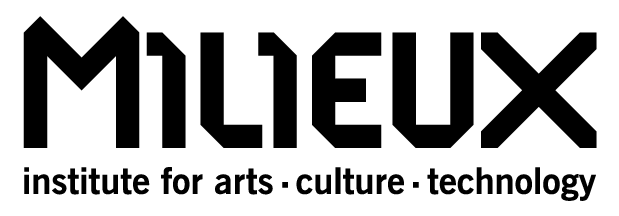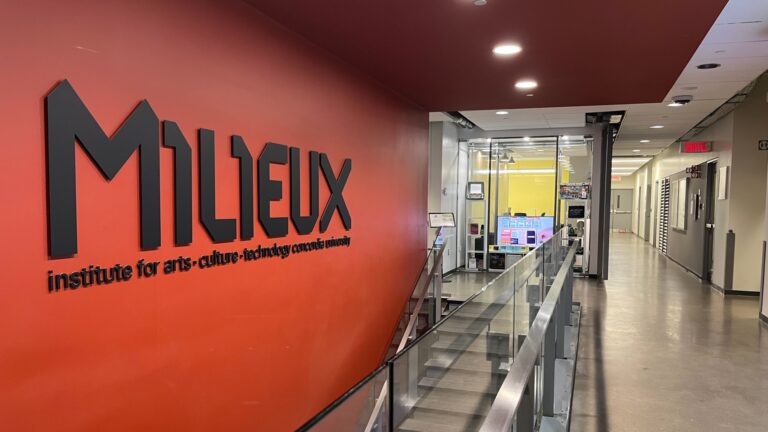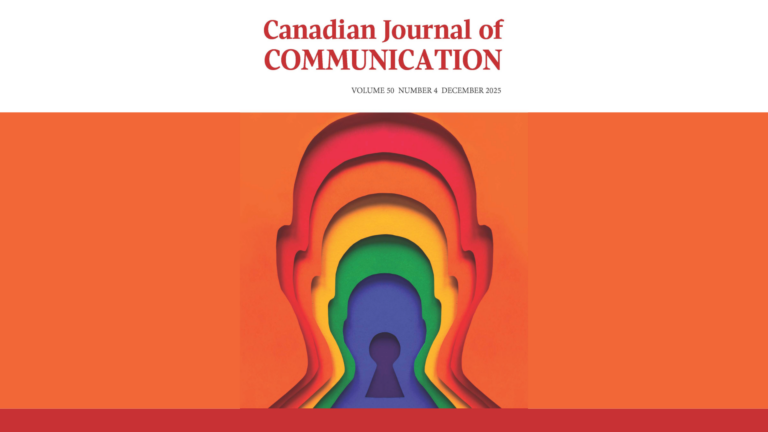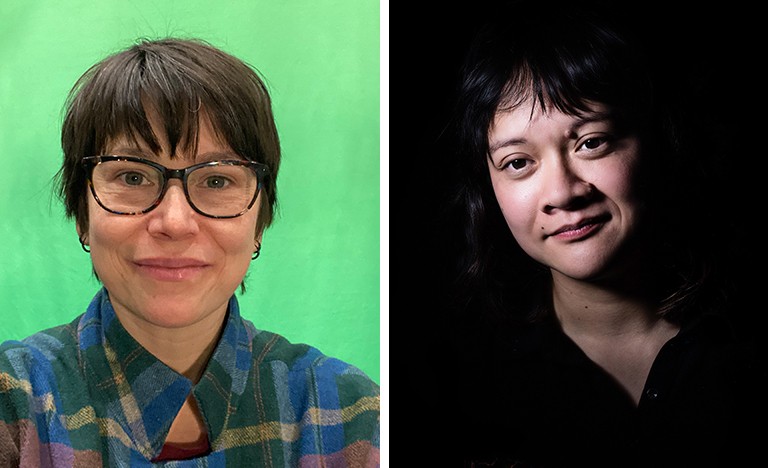By: Lucy Fandel, LePARC Cluster coordinator

Within the spatial confines of Zoom protocol, artists are asking what our worlds might be like if we attended more closely to our internal motivations and the potential for play.
Forty artists and researchers gathered on Nov. 21 and 22 to launch a new series of experimental workshops. Some of them called in from small, socially-distanced groups at studios and others called from their individual spaces, to connect virtually on through video.
The screen became a tool and a toy, rather than just the site for the event. With guidance from performance practitioners and researchers, attendees worked to disintegrate the sense of passive physical cordiality that video meetings can impose. With a crown of bright virtual flowers floating on their head, dance artist and writer pavleheidler asked, “Can you continue doing what you want, simultaneously as you do what you have to do?” The question then begged, simple and fundamental: What do you want to do?
LePARC and the Centre de Création O Vertigo (CCOV) are organizing the new curatorial collaboration series, Expanded Workshops. Co-curators Hanako Hoshimi-Caines and Nate Yaffe, and myself as co-coordinator of LePARC, invited performance practitioners and researchers to guide the sessions. They included lo bil (Toronto, ON) and Alys Longley (Aukland, NZ) with her colleagues Macarena Campbell, Máximo Corvalán-Pincheira, Eduardo Cerón-Tilleria, Rolando Jara (Chile), and pavleheidler (Sweden).
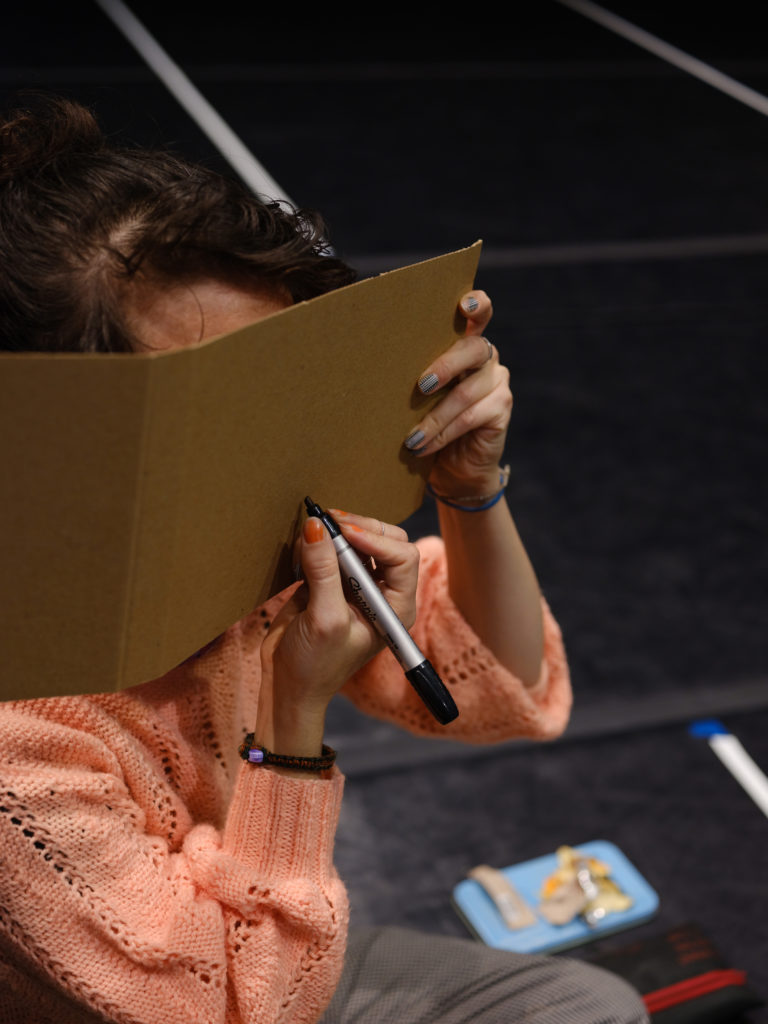
Tricia Enns in Language is an intangible bridge. 
Alys Longley and her colleagues invited participants to explore cardboard as a performative tool and an extension of the body.
Combining in-person and virtual gatherings, participants were encouraged to try new ways of connecting to their bodies and one another. Throughout the workshops, the consideration of our physical locations, the disparate and storied territories in which we live and our connection across multiple time zones and continents, gave the weekend a thrilling and disorienting sense of multidimensionality and borderlessness.
Alys Longley and her colleagues’ workshop, language is an intangible bridge bounced across translations in French, English and Spanish, and invited participants to co-create through distance, scores, and experimental documentation with a common and versatile material: cardboard. Longley described the material as “both equalizing and accessible.” The cardboard brought about practical and poetic reflections about packaging, global shipping, temporality, social unrest, touch, housing and insulation for people without permanent homes, and much more.
For Bettina Szabo, Uruguayan dancer and choreographer based in Montreal, the connection to artists of the global South was essential to her experience in the Saturday workshop:
“It was especially significant for me to be able to connect with creators from South America…Some sent me private messages daydreaming about our facilities available in Canada. It really gave me a flashback to before leaving and how I was romanticizing the opportunities abroad. As the collective mentioned, there is kind of an “inferiority complex” from South American countries, so called ‘third world countries’ that is a leftover of colonial discourse but still super present and engrained.”
Her attention has since shifted to encouraging artists who are building local support structures in those countries, rather than sending solutions from the outside that reinforce the saviour-victim dynamic.
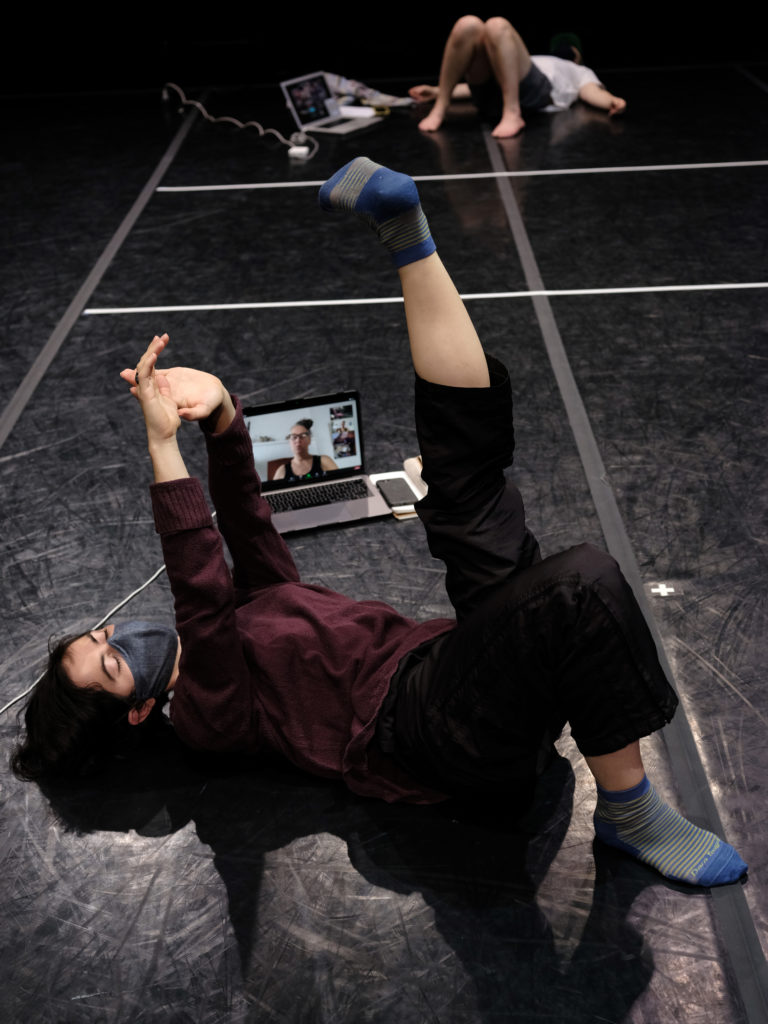
On Sunday, lo bil’s workshop Human-human: trialling ecologies of practice, opened the spaces to experiments with attention, intention and pleasure. In such a protocol heavy space as Zoom, she guided us into an awareness and a curiosity towards sensation and emotion unfolding internally. With people moving about both in the CCOV black box and in their individual virtual spaces, her proposal to reinvent the screen and camera as a liquid and messy place welcomed us into a vulnerable and playful state of not knowing. She asked us not to be afraid of “pushing into one another and also being porous to one another.”
Tricia Enns is an MFA student in the Design program and participated in person both days. “I was terrified and excited by the in personness.” She described the mix of in-studio and virtual connections as a combination of weird, overwhelming and playful. “The second day since we were the only group gathered together in a studio, it felt sort of like being in a dance troupe for those participating virtually. It was slightly performative!”
